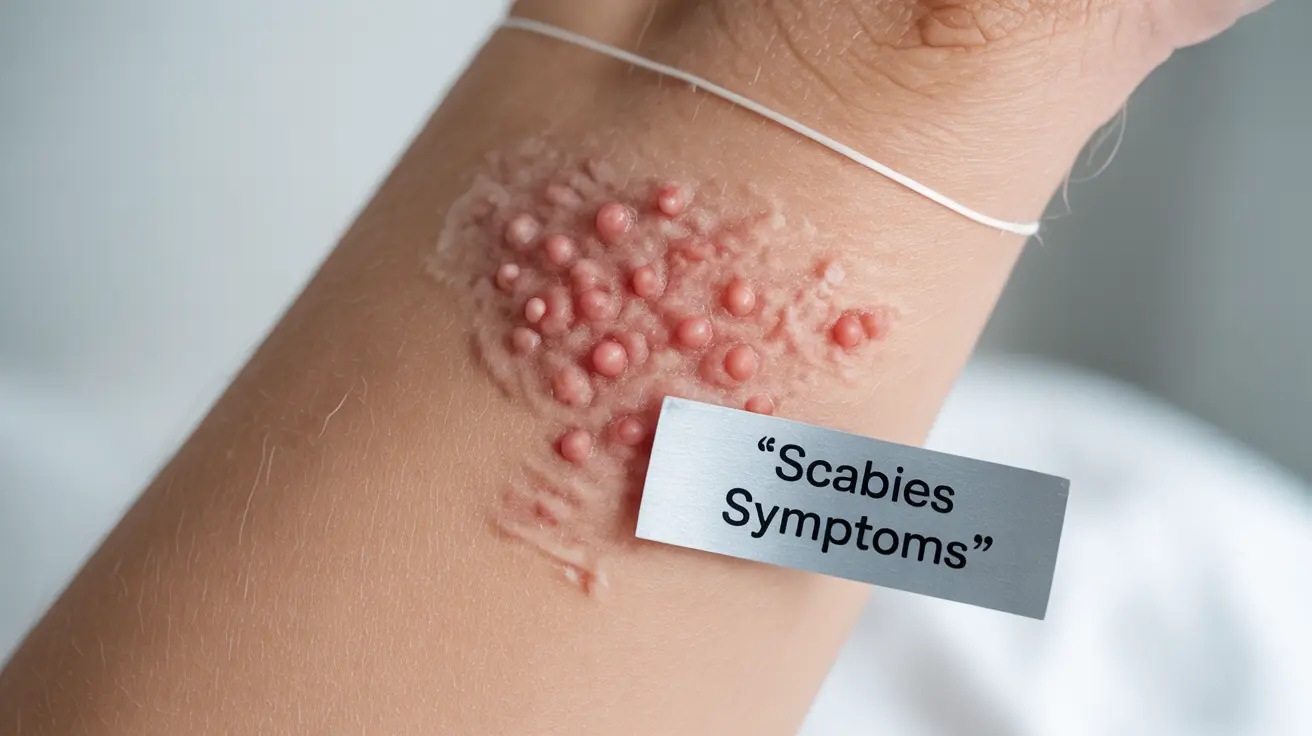Identifying scabies early is crucial for effective treatment and preventing its spread to others. This microscopic mite infestation can cause intense itching and distinctive skin changes, but knowing exactly what to look for can help you recognize the condition and seek appropriate medical care promptly.
Understanding the telltale signs of scabies can make the difference between early intervention and prolonged discomfort. Let's explore the key indicators that can help you identify a potential scabies infestation and know when it's time to consult a healthcare provider.
Primary Signs and Symptoms of Scabies
The most characteristic symptom of scabies is intense itching that typically worsens at night. This itching occurs when the female scabies mites burrow into the skin to lay eggs, triggering an allergic reaction in the body.
Common signs include:
- Intense itching that gets worse at night
- Small, red, raised bumps that may resemble pimples
- Thin, irregular lines on the skin (burrow tracks)
- Skin scaliness or crusting
- Small blisters or sores from scratching
The Distinctive Scabies Rash
A scabies rash has unique characteristics that set it apart from other skin conditions. The rash typically appears as small red bumps, often arranged in clusters or lines. These bumps may be accompanied by grayish-white or skin-colored lines, which are the actual burrows created by the mites.
Common Areas of Infestation
In Adults
In adults, scabies typically affects specific areas of the body, including:
- Between fingers and toes
- Around wrists and elbows
- Under breasts and around nipples
- Along the belt line and waist
- In the genital area
- Around the navel
In Children
Children may show different patterns of infestation, commonly affecting:
- The scalp
- Face and neck
- Palms of hands
- Soles of feet
- The entire torso area
Identifying Burrow Lines
Burrow lines are one of the most definitive signs of scabies. These tracks appear as slightly raised, grayish-white or skin-colored lines, typically 2-15 millimeters long. They're often found in the webbing between fingers, on the insides of wrists, and around the elbows.
Timeline of Symptom Development
Understanding the timeline of scabies symptoms is crucial for early identification. For first-time infections, symptoms typically appear 2-6 weeks after exposure. However, in people who have had previous scabies infections, symptoms may develop much more quickly, usually within 1-4 days.
When to See a Healthcare Provider
It's important to seek medical attention if you notice persistent itching, especially at night, accompanied by a rash or burrow lines. A healthcare provider can properly diagnose scabies through a skin examination and microscopic identification of the mites or their eggs.
Frequently Asked Questions
- What are the most common signs and symptoms to look for when identifying scabies?
The most common signs include intense itching (especially at night), small red bumps or blisters, thin irregular lines on the skin (burrows), and scaling or crusting of the skin. The itching is typically more severe at night and affects specific areas of the body.
- Where on the body does scabies usually cause itching and rash in adults versus children?
In adults, scabies typically affects areas like between fingers, around wrists, elbows, waist, and genital areas. In children, it commonly appears on the scalp, face, neck, palms, soles of feet, and entire torso.
- How can I recognize the characteristic burrow lines or rash patterns caused by scabies mites?
Burrow lines appear as slightly raised, grayish-white or skin-colored lines, typically 2-15mm long. They're most commonly found in the webbing between fingers, on wrists, and around elbows, often appearing alongside clusters of small red bumps or blisters.
- How soon after exposure do scabies symptoms typically appear, and can scabies spread before symptoms show?
For first-time infections, symptoms usually appear 2-6 weeks after exposure. In people previously infected, symptoms may develop within 1-4 days. Yes, scabies can spread before symptoms appear, making it important to treat all close contacts.
- When should I see a doctor to confirm if I have scabies and rule out other skin conditions?
See a doctor if you experience persistent itching (especially at night) combined with a distinctive rash or burrow lines. Professional diagnosis is important as scabies can resemble other skin conditions and requires specific treatment to cure.




